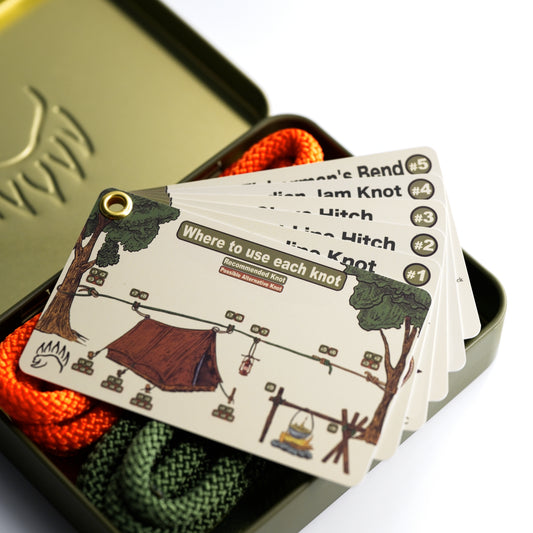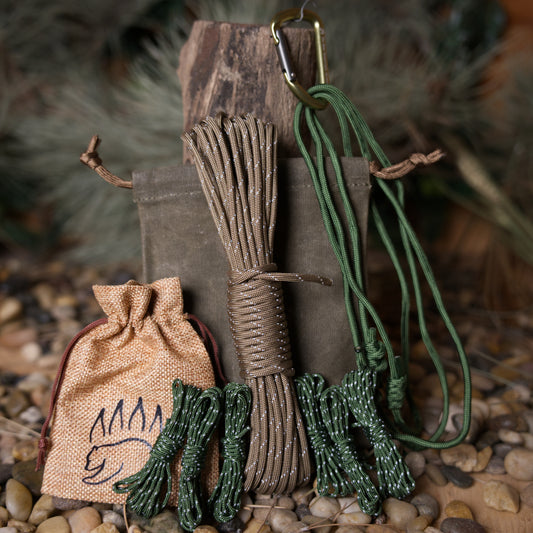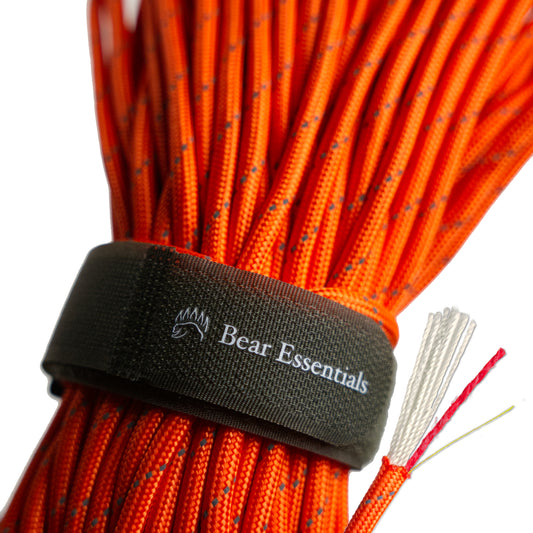How to Tie the Slipped Ground Line Hitch
Usage
The Slipped Ground Line Hitch is commonly used to secure a rope to a stake or post with a quick-release feature, particularly in camping for tent guylines or tarps. Compared to the standard Ground Line Hitch, which is more secure but harder to untie, this variation allows instant release with a tug, making it ideal for temporary setups. Its simple structure suits rapid anchoring, but it’s less stable under heavy loads. This knot is perfect for fast, temporary ties.
Why Learn the Slipped Ground Line Hitch?
Its quick-release design simplifies rope anchoring. This knot is a practical choice for campers and bushcrafters needing fast, temporary ties.
Common Uses
-
Camping:
- Secures guylines to stakes for tents or tarps with quick release.
- Ties ropes for temporary, wind-resistant shelters.
-
Bushcraft:
- Fastens tarps to stakes for short-term shelters.
- Secures ropes for hanging gear with easy removal.
-
Utility:
- Ties ropes to posts for temporary household tasks.
- Anchors cords for quick-release outdoor setups.
ABOK Number
(Ashley Book of Knots)
Other Names
Category
|
Notable Features
- Instant release: Unties with a single pull, ideal for quick breakdowns.
- Easy to tie: Simple variation of the Ground Line Hitch, quick to learn.
- Versatile use: Suits camping, bushcraft, and utility anchoring tasks.
- Secure for light loads: Holds well for temporary, moderate tension.
- Minimal rope wear: Reduces stress on the cord with quick untying.
Variations
Ground Line Hitch vs. Slipped Ground Line Hitch
- Pros: More secure for prolonged anchoring, less likely to slip.
- Cons: Harder to untie, lacking the quick-release feature.
Similar Knots
Slipped Clove Hitch vs. Slipped Ground Line Hitch
- Pros: Quick to tie and releases instantly for temporary ties.
- Cons: Less secure under load, more prone to slipping than the Ground Line Hitch.
Highwayman’s Hitch vs. Slipped Ground Line Hitch
- Pros: Releases instantly and suits temporary anchoring to posts.
- Cons: Less stable under jostling, unlike the Ground Line Hitch’s grip.
History
The Slipped Ground Line Hitch, a variation of the Ground Line Hitch, likely evolved from equestrian and camping practices where quick-release knots were needed for tethering horses or securing tents. The standard Ground Line Hitch is referenced in The Ashley Book of Knots (#1678), and its slipped adaptation reflects modern needs for rapid untying in camping and bushcraft. Its simplicity makes it a valuable knot for temporary outdoor tasks. Source: The Ashley Book of Knots
Security Level
The Slipped Ground Line Hitch is reliable for temporary, light to moderate loads, such as securing tent guylines, but its quick-release nature makes it less stable than the standard Ground Line Hitch. It holds well under consistent tension but may slip if jostled or under heavy loads. A stopper knot on the bight can enhance security for slippery ropes such as double overhand stopper knot.
Downsides
- Limited stability: Less secure for heavy or prolonged loads due to quick-release design.
- Tension-dependent: May loosen without constant pull or if stakes are unstable.
Structure
- Pass the rope around the stake or post.
- Cross the working end over the standing part, forming a loop.
- Wrap the working end around the stake again, passing it under the standing part.
- Form a bight with the working end and tuck it through the loop created in step 2.
- Pull the standing part to tighten, ensuring the bight is accessible for quick release.
Pro Tip: Keep the bight long enough for easy pulling during release. Use a smooth, flexible rope like nylon for quick untying. Check the knot’s grip before relying on it to ensure it holds under light tension.
FAQ
Is the Slipped Ground Line Hitch strong enough for heavy loads?
It’s suitable for light to moderate loads like tent guylines, but not for heavy or critical tasks.
What ropes work best for the Slipped Ground Line Hitch?
Flexible, smooth ropes like nylon or polyester ensure easy tying and quick release.
How does the Slipped Ground Line Hitch compare to the standard Ground Line Hitch?
It’s faster to untie but less secure for prolonged or heavy anchoring.
Can the Slipped Ground Line Hitch be used for climbing?
No, it’s not suitable for climbing or life-support applications.
Why choose the Slipped Ground Line Hitch over the Slipped Clove Hitch?
It’s more stable for light anchoring tasks, though slightly more complex to tie.
Important Notes on Safety
Common failure points include using the knot for heavy loads or unstable stakes, which can cause slipping. Always verify it’s used for temporary, non-critical tasks. Inspect ropes and stakes for wear or damage before tying. Ensure the stake is firmly anchored to maintain tension. Practice tying and releasing in low-risk settings first.









